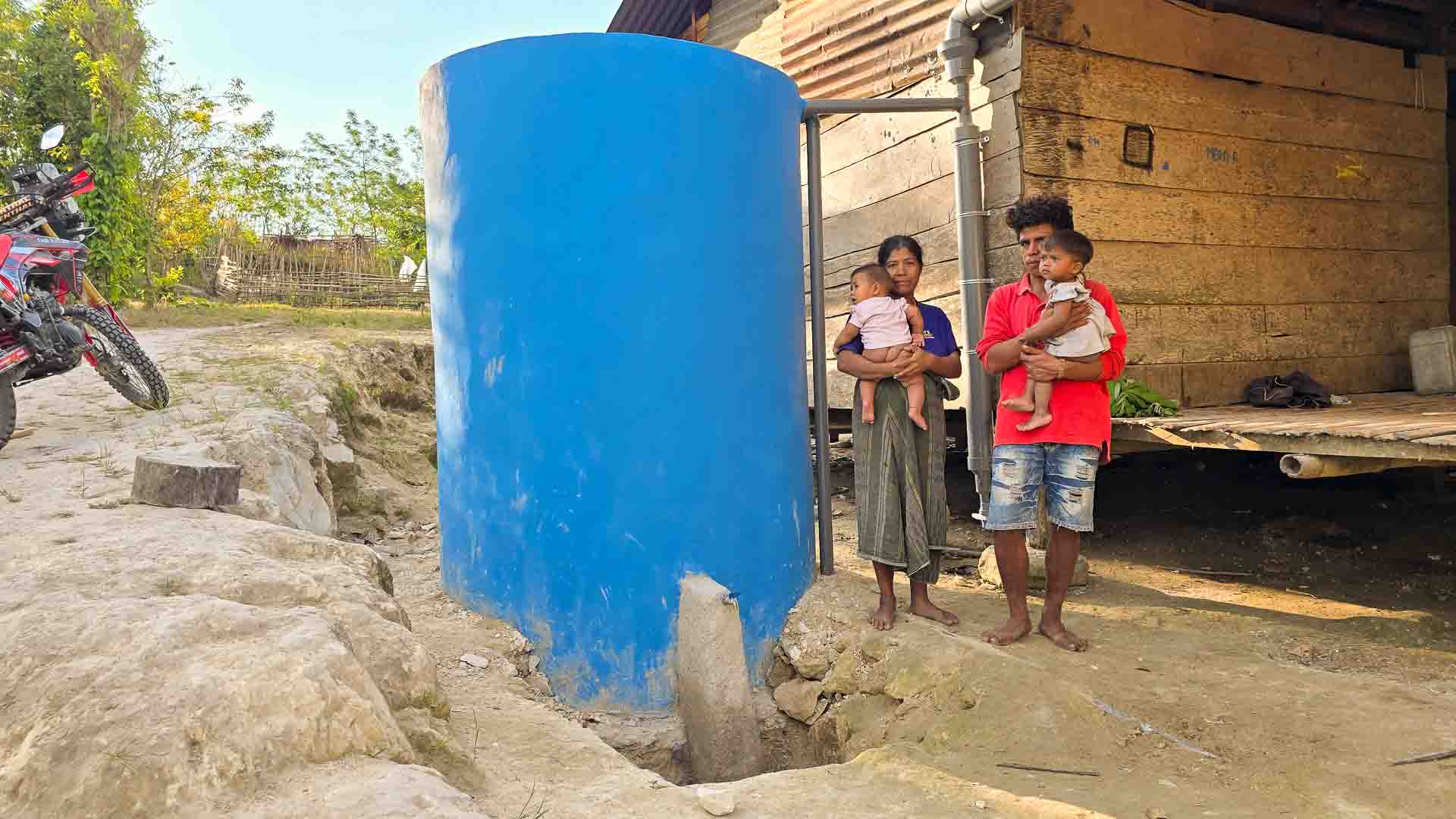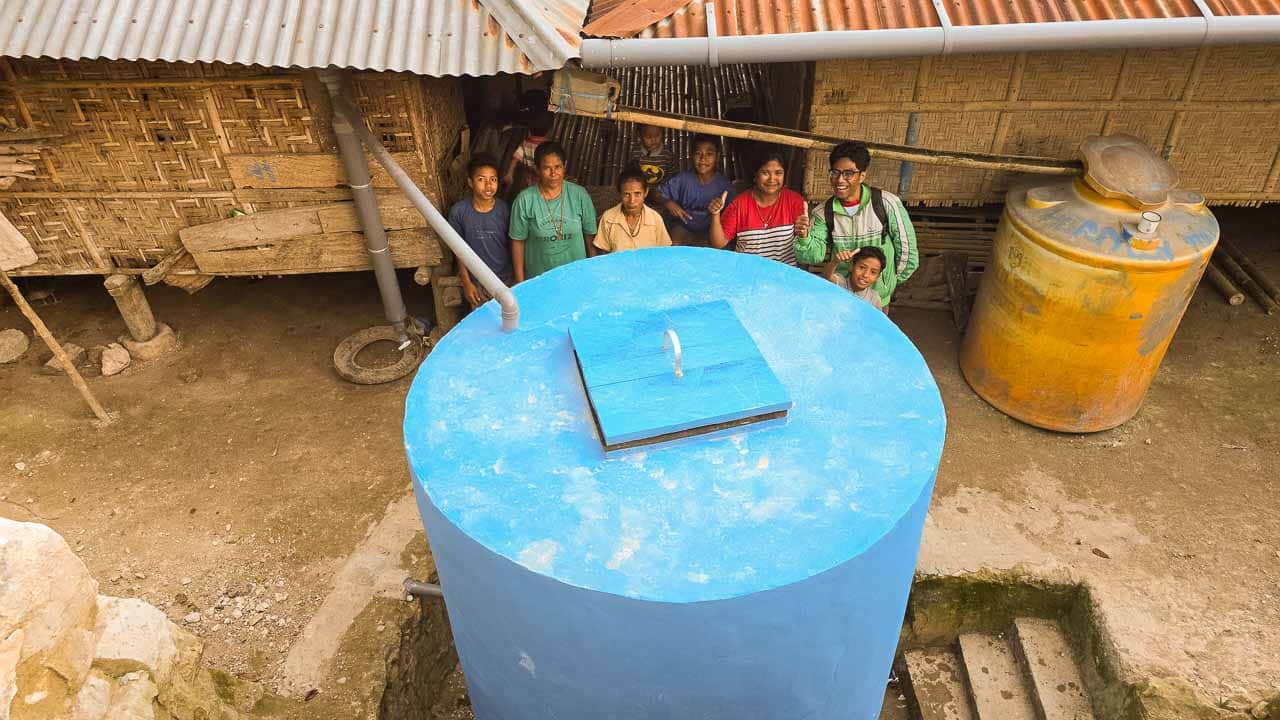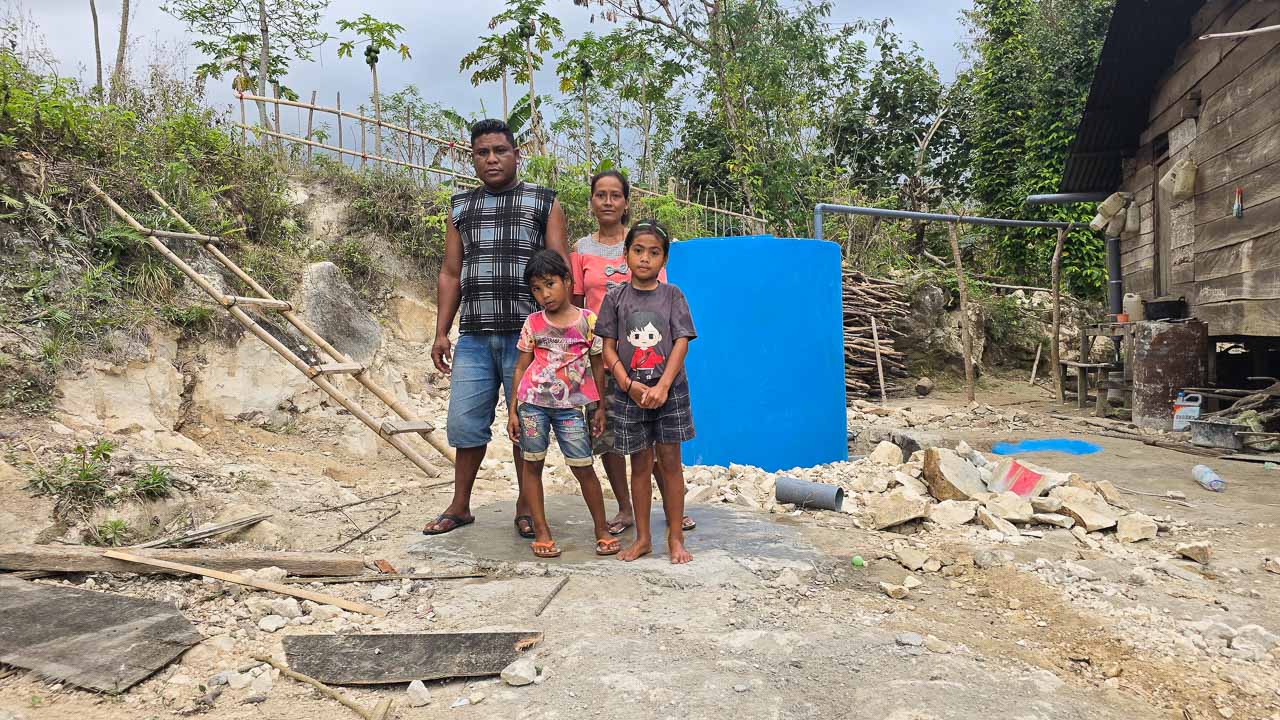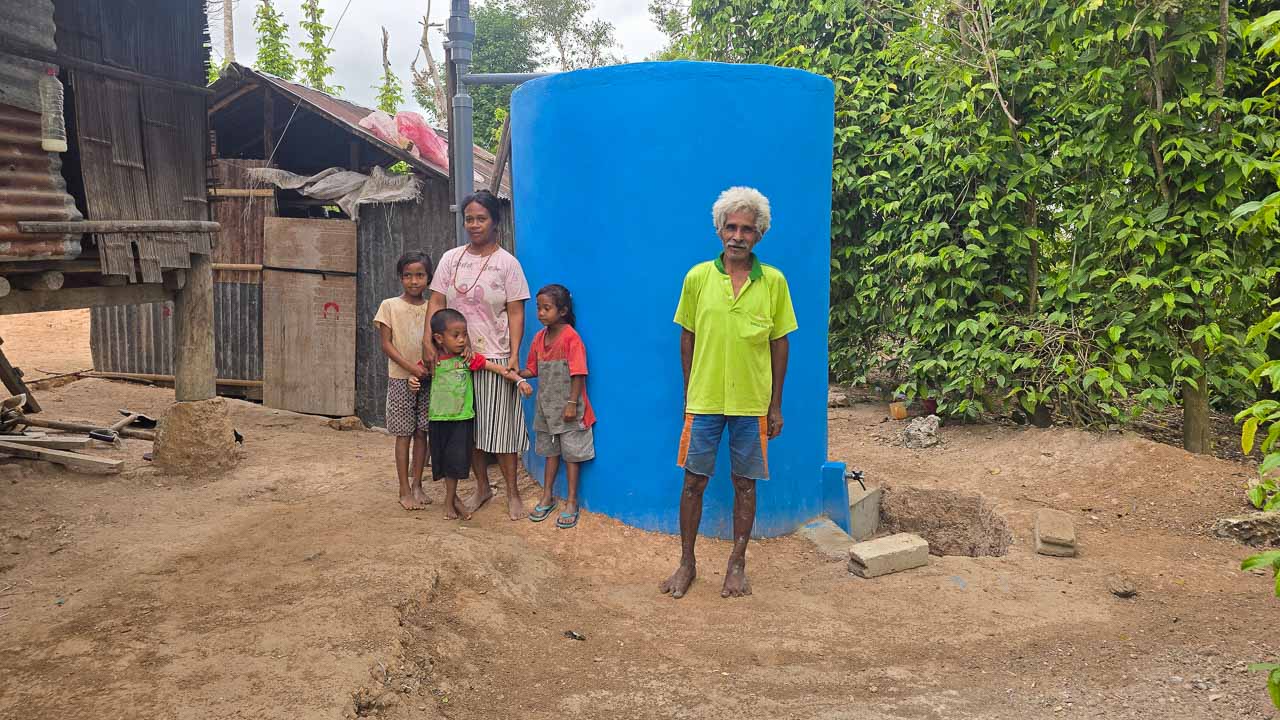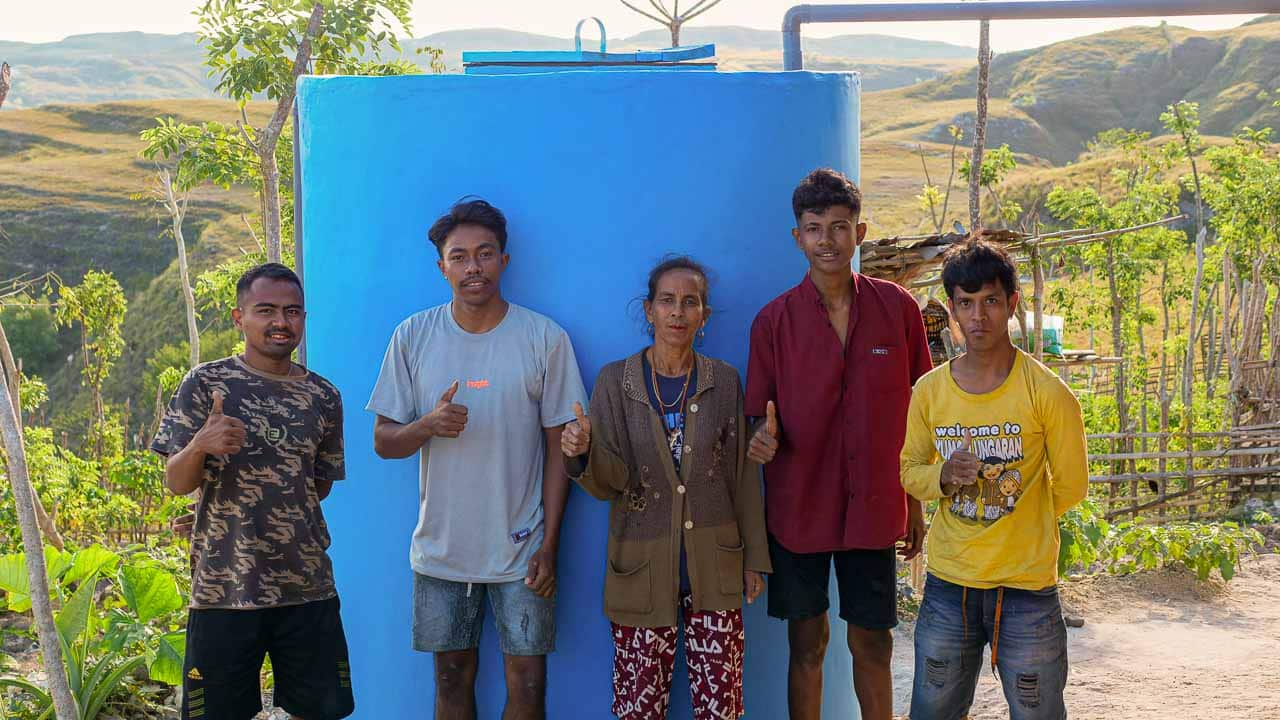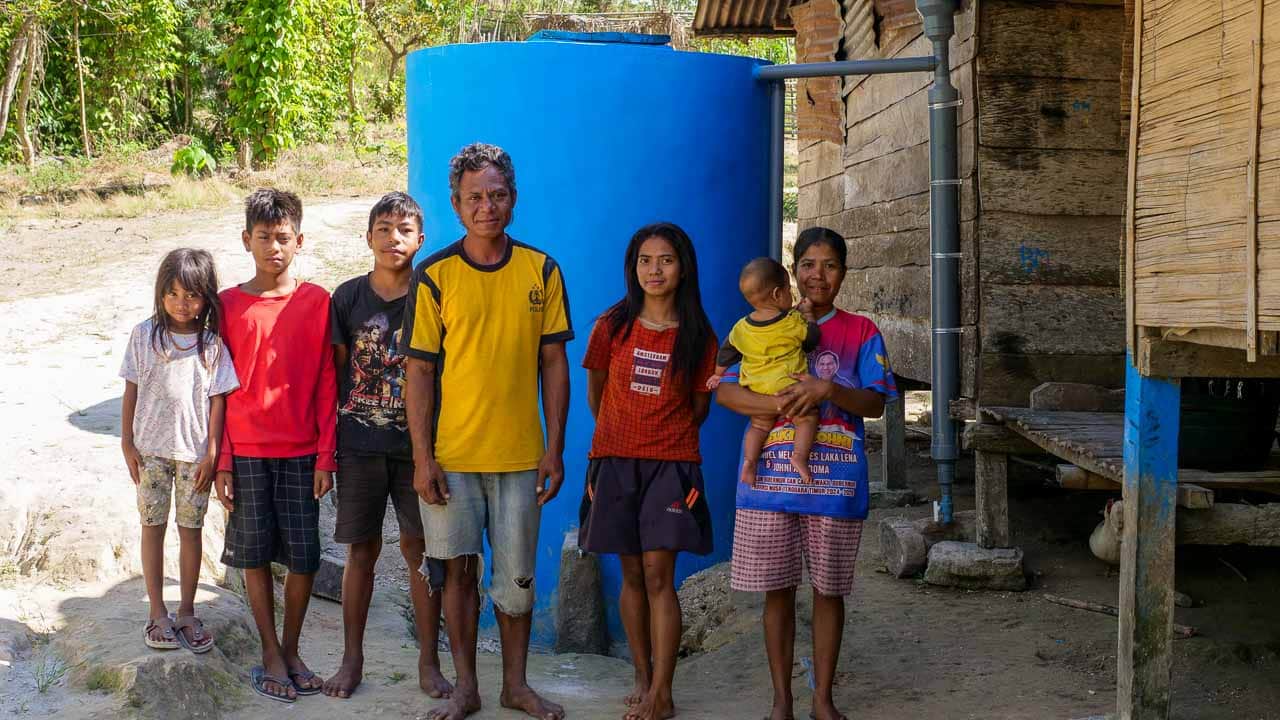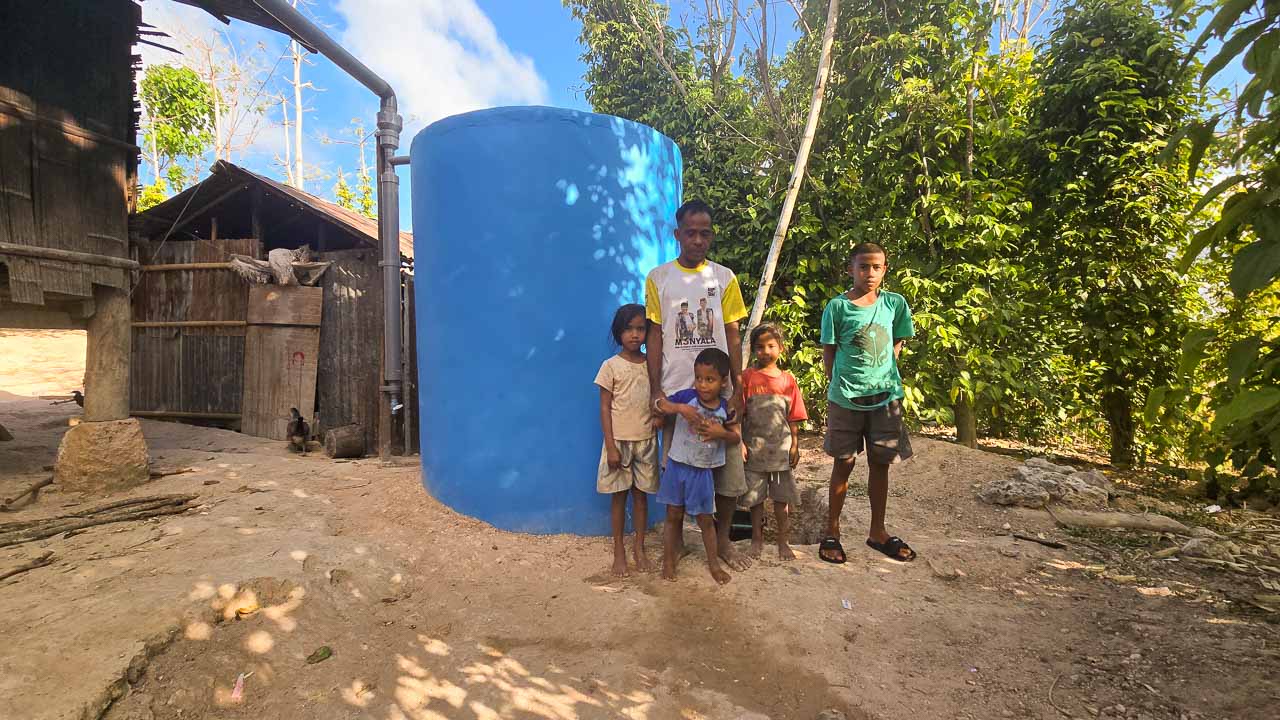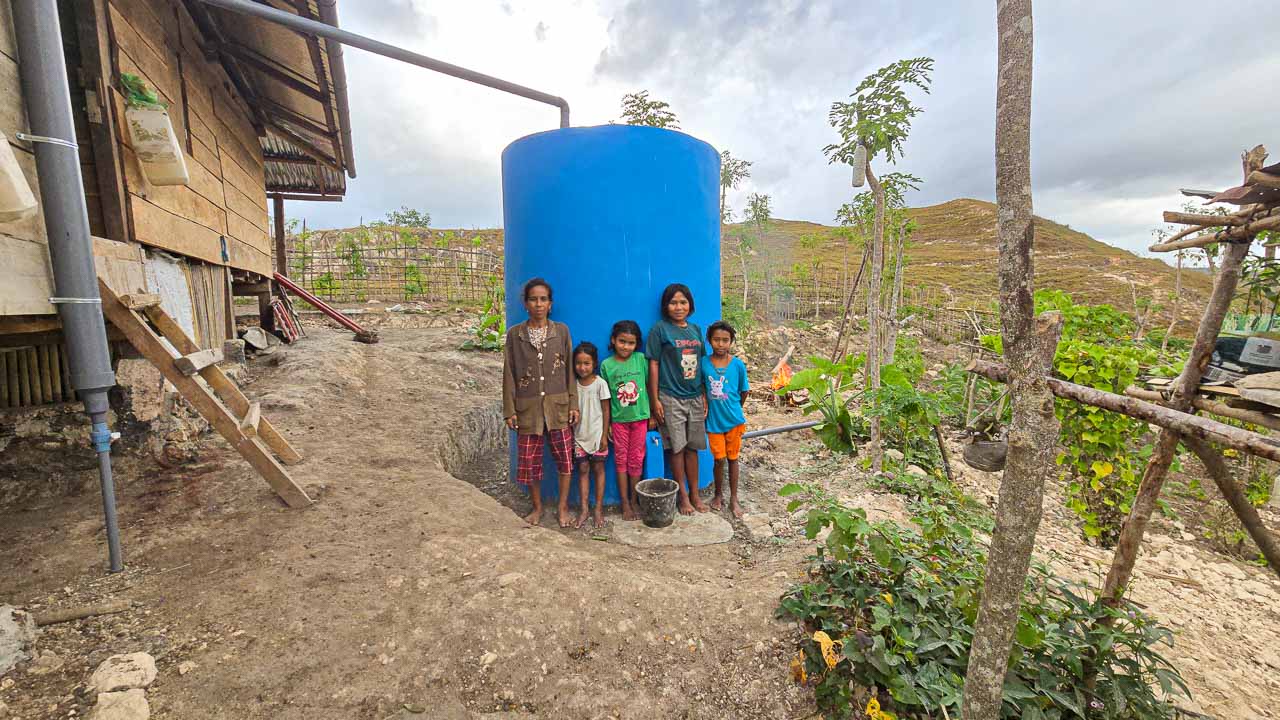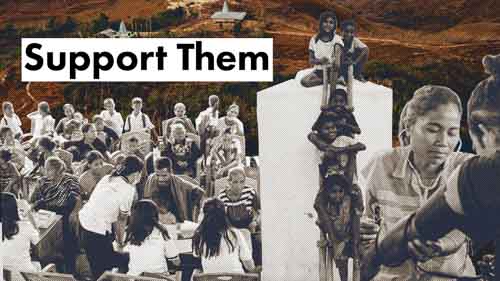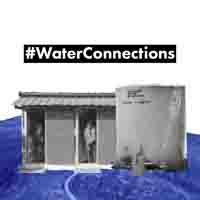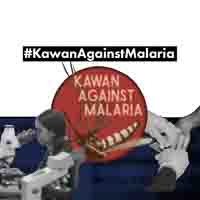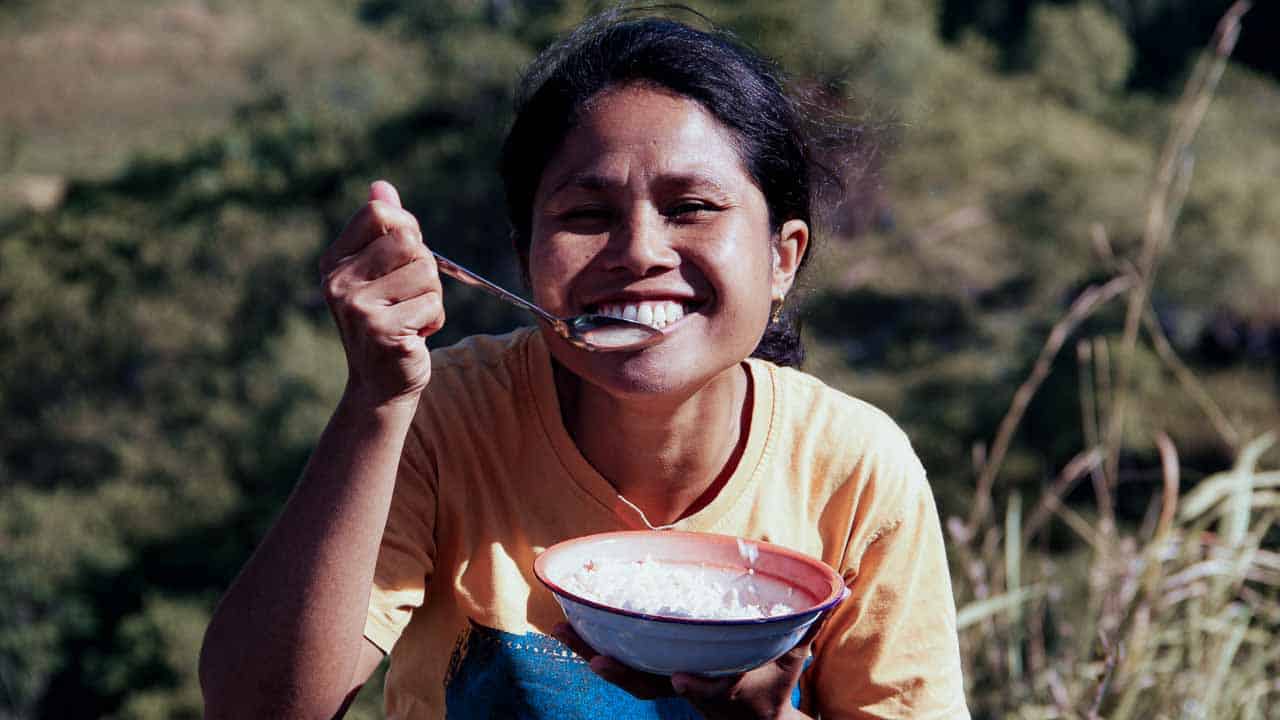Eight Ferro-Cement Reservoirs Improve Health and Water Access in Hambarita.
Safe water for 120 people via community-built ferro-cement reservoirs.
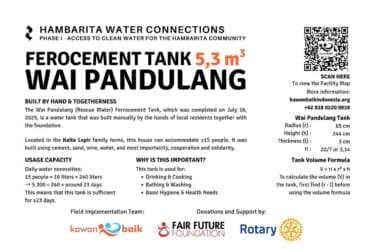
One of eight ferro-cement reservoirs built in Hambarita, East Sumba, providing safe, filtered rainwater to rural families.
Water is life. These reservoirs give rural families health, dignity, and a future.
Constructing eight ferro-cement rainwater reservoirs in Hambarita took us four rigorous months—our most daunting challenge was not the building itself, but the arduous logistics involved. Often, it is the most inaccessible areas that are in dire need of clean water. The isolation of Hambarita meant there were no roads, no electricity, and no existing water sources.
In March, eight sites were strategically chosen, each designated to support approximately three houses—serving around 15 people per site. Clearing tracks through dense forest and brush frequently required manual labour, as heavily loaded trucks were often pulled with ropes. Each delivery of materials—including sand, cement, steel rods, filtration systems, and pipes ranging from 1 to 4 inches in diameter—was carefully planned to construct two reservoirs simultaneously.
During the workweek, from Monday to Saturday night, our team resided in the villages, sharing homes with local families near a previously established large reservoir called “Marawai Urang.” The essential supplies brought along included food, water, generators, medical supplies, and other necessary provisions.
Each reservoir, boasting a capacity of 4,400 and 5,300 litres of filtered rainwater, now proudly bears a name in the Sumbanese language, often symbolising water.
This is their names: Wai Maringu (Cold Water), Wai La Padang (Water in the Field), Wai Ma Njanjar (Water Flow), Wai Pa Luri Wangu (Water for Life), Wai Pandulang (Rescue Water), Wai Kahingir (Clean Water), Wai La Wurung (Water in a Pot), Wai Ma Hamu (The Best Water).
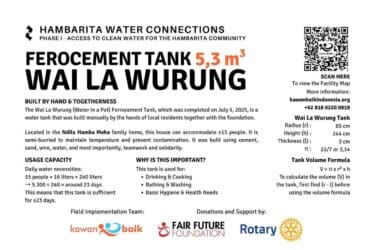
One of eight ferro-cement reservoirs built in Hambarita, East Sumba, providing safe, filtered rainwater to rural families.
These names reflect the significance of these reservoirs, integral to daily life. Without water, life halts; nothing flourishes. Painted blue and hermetically sealed, they effectively prevent the entry of insects and animals, particularly protecting against malaria-carrying Anopheles mosquitoes and those spreading dengue. The outdated wooden lids have now been replaced with durable steel covers, ensuring long-lasting protection.
Water is captured via a gutter system installed on the most suitable roof slopes. Depending on the roof height at each location, tanks may be partially buried to enable gravity-fed water flow. Before entering the reservoir, rainwater passes through a three-stage filtration system crafted entirely from locally available materials. This approach, paired with ferro-cement construction—a technique imparted to the villagers—ensures durability for 10 to 20 years.
For ultra-rural, impoverished families in East Sumba, this transformation is life-altering. Readily available clean water eliminates the need for daily, hours-long, arduous treks under a relentless sun, fetching unsafe water. Freed from this task, children can attend school regularly rather than transport heavy jerrycans, and women gain precious time for income-generating activities, family care, and engaging in community life.
Pregnant women face reduced risks associated with dehydration and unhygienic conditions. Access to water offers adolescent girls and women during menstruation the dignity, health, and comfort they need. Improved hygiene reduces the risk of infections, particularly for newborns and young children. Cooking safety is enhanced, nutrition improves, and the cycle of disease initiated by contaminated water is disrupted.
Each reservoir, costing 2,200 Swiss francs to construct, presents an extraordinary opportunity. For the price of a modest household appliance, communities receive decades worth of life, dignity, and health. Swiss expertise, honed over 16 years of experience by the Fair Future Foundation and Kawan Baik Indonesia, underpins these feats. Even in the most isolated locales, we demonstrate that it is not only feasible to provide water but also to offer hope for a prosperous future.
Today, the 15th of August 2025 – Alex Wettstein
- We invite you to read the final report of this project here by downloading this PDF document.
- Would you also like to participate in the construction of one of these reservoirs? Take a look at this document here
- Explore the interactive project map for Laindatang and Hambarita to see the exact location of each reservoir and related works. View the map here.
- Visit the complete online gallery of over sixty images related to these eight reservoirs here.
- See the full gallery of nine information panels that detail the story, capacity, and impact of each reservoir, including the eight built in Hambarita here.
In Short – Clean Water, Healthier Childhoods
Beyond quenching thirst, the eight ferro-cement reservoirs in Hambarita create a safer environment for children to grow. With water stored securely at home, risks from dangerous journeys to distant, unsafe sources vanish. Children avoid injuries, exhaustion, and missed school days, gaining energy and time for learning and play. For parents, especially mothers, it means peace of mind knowing their children are safe, hydrated, and free from exposure to waterborne diseases at an early age.
Watch over 20 short videos capturing every step of the Hanbarita and Laindatngs reservoirs constructions — from the first shovel to the final drop of clean water. Click here to view the films.
Eight Ferro-Cement Reservoirs Hambarita
List of Related Organisations with Hyperlinks
- Water.org: Works to bring safe water and sanitation to people in need worldwide.
- Rotary International: Global humanitarian organisation supporting water, health, and education projects.
- UNICEF: Advocates for children’s rights, including clean water and sanitation.
- WHO: Leads global efforts to improve public health, including waterborne disease prevention.
- Global Water Partnership: Supports sustainable water resource management worldwide.
- Lifewater International: Improves water, sanitation, and hygiene in rural communities.



